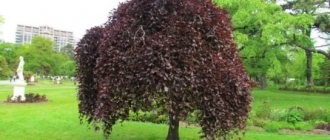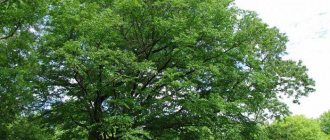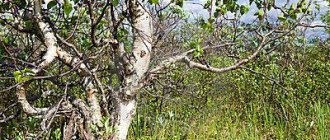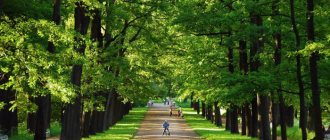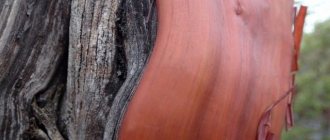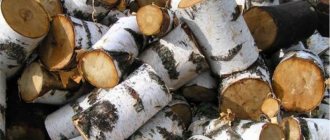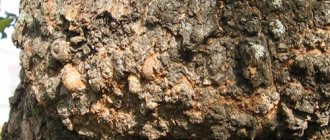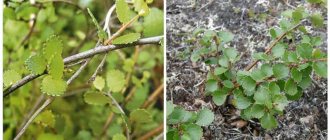Birch is the most favorite tree of great Russian poets and artists, which can inspire and fascinate. Downy birch is considered one of the most common types of birch that is found in the wild and in summer cottages. It is interesting that earlier the downy birch was popularly called “white”, but over time the silver birch began to be called this way, and in order to avoid confusion, the name fell out of use.
The Russian beauty remains loved to this day and grows not only in forests, fields and along roads, but also decorates large and small gardens and summer cottages. It is precisely because of the prevalence of the tree that it is worth paying attention to what types of downy birch there are, how to care for it, propagate it and protect it from pests. We will talk about this in detail in this article.
Downy birch: description
This is the most cold-resistant of all types of birch. It needs moist soil to grow quickly and suffers from drought. Young trees have brownish-brown bark and can be confused with alder. Adult birches, starting from the age of nine, differ from all trees in their bark, which is white and smooth to the very base of the trunk. Only in old age do shallow cracks appear at the bottom of the trunk. In places where there are no cracks, the bark around the circumference of the trunk may lag behind in small plates - this is birch bast.
Downy birch at a young age has a slender, narrow crown, which over the years takes on a spreading shape. The tree has a developed root system, but it is located near the surface of the earth, so a strong wind can uproot it. The birch trunk is slender, but in solitary trees it can be double, and sometimes multi-trunked.
The leaves of young trees are sticky, tender, and light green in color. In older birch trees, the leaves become dark green. In autumn they turn yellow and fall off with the onset of frost. The leaves are ovoid in shape, about 7 cm long and up to 5 cm wide, they are pointed at the apex, have a rounded base, and serrated edges.
Peduncles are dioecious: male and female. Men's earrings appear in autumn, and they often persist into winter. The pollen contained on the male earrings is carried by the wind to the female ones. In the spring, with the appearance of young leaves on the birch tree, female-type earrings bloom. Flowering continues from the second half of April to mid-May. The seeds ripen by September and remain in the earrings for a long time. Each seed has two whitish wings. With the help of the wind, they fly far from the mother tree. Birch begins to bear fruit in the fifteenth year of life. Downy birch lives up to 120 years. Sometimes it survives to a more mature age.
Bloom
When the time comes to bloom, the birch beauty throws out graceful long earrings connected into single-sex brushes. They vary in length and can be from 6 to 10 cm.
The stamen racemes are found on shortened branches at the side, while the pistillate catkins are located nearby. They have a cylindrical shape and a clear vertical direction.
As soon as the leaves bloom, you can already admire the flowering process. Typically, color appears in late spring. By the beginning of autumn, winged nuts, also known as fruits, are already ripening.
Growing
Downy birch is best grown in temperate to moderately cold climates. It prefers to grow on the banks of reservoirs, in swamps and mountainous areas.
In the wild, there are entire forest tracts of fluffy birch trees. They can also mix with other tree species. Birch is unpretentious to the soil and can grow on sandy, loamy, clayey, neutral, acidic and very acidic soil. This frost-resistant species prefers places with good lighting and responds well to large amounts of moisture. Under favorable conditions, downy birch, whose height reaches 25-30 m, can be a very thick tree with a diameter of 0.8 m.
Birch is grown using seeds:
- They are sown in a cold greenhouse from August to September. The seeds are scattered on well-loosened soil and mulched with earth. It is better to choose a greenhouse on the sunny side.
- After germination, the seedlings are transplanted into small containers.
- In the spring, they are planted in a permanent place, making the distance between seedlings 3-4 meters, and there is no need to deepen the root collar.
- Over the course of a year, the seedling will add 1 m in height.
Where does fluffy birch grow?
This tree grows in the European part of Russia, the Caucasus, Siberia, Transbaikalia and Europe, forming indigenous or together with coniferous and other deciduous forests.
It prefers moister soils and can grow in lowland swamps, watershed areas, forest edges, clearings, and in the mountains. On the plains of the forest-tundra, it forms sparse park birch forests and crooked forests, consisting of only birches or mixed with larch and spruce.
Unlimited range of applications
Choosing a place to plant a tree should be done wisely, keeping in mind the plant’s ability to improve absolutely any soil.
Birch will take root without any problems even in an area that has survived a fire, and bare soil and a former field are suitable for it. After falling, the leaves gradually turn into excellent fertilizer, and the powerful root system disinfects the soil.
Birch trees are perfect for landscaping populated areas because they look beautiful and are not afraid of strong winds. What makes a tree decorative is its spectacular crown combined with snow-white bark and bright leaves. As a building material, birch is also irreplaceable.
Warty birch: description
This type of birch is often called drooping or weeping. The tree, reaching a height of 20 m, sheds its leaves for the winter. The roots are close to the surface of the earth, sometimes they can go deeper to the side. The trunk reaches 80 cm in diameter. The crown is oval, spreading and sparse. The bark on the tree is smooth and white, only in old birches the lower part of the trunk is black-gray and cracked. On young trees, the bark is yellowish in the upper part of the trunk, and then white. On fresh shoots, drooping and bare, there are resinous warts.
The leaves are jagged, strongly cut in the shape of a diamond; in young birches they are resinous, and the catkins are drooping. The fruits are oblong with two wings and have the shape of an ellipse. The tree grows quickly in any soil. Tolerates frosty weather well and loves light. The seeds have good germination, but the cuttings take root poorly.
The weeping birch lives up to 100-120 years, and grows in height up to 60 years. Particularly intensive growth is observed after 10 years; in a year it grows up to 0.9 m. It begins to bear fruit at the age of 20. The tree scatters a huge amount of seeds and occupies the entire area around itself, not allowing other plants to multiply. And only then a few seedlings survive and continue to grow.
Landing
The warty birch (the downy birch, in contrast, prefers damp places) does not like groundwater. It chooses loamy, non-compacted soils and does not tolerate air pollution well, so it is better not to plant it near highways. Suitable for both single and group plantings.
For planting, prepare a soil mixture of leaf humus, peat and sand. A drainage sand layer of 15 cm is placed at the bottom of the hole. For spring planting, seedlings 5-7 years old are used. Seeds older than 8 years are planted with a lump of frozen soil in winter. Birch trees are planted very rarely in autumn due to the death of small trees during the winter. As when planting downy birch, the root collar of the seedling is not buried, otherwise the mycorrhiza located on the roots of the birch will die. And without mushrooms these trees do not exist.
Habitat
Birch is a typical “resident” of the Northern Hemisphere. Its range ranges from hot subtropics to areas with very harsh climates. In central Russia and in areas with temperate climatic conditions, these trees form light forests.
The tree is unpretentious to the soil. Sandy and loamy soils, as well as chernozems or depleted soils, are suitable for it. Birch loves moisture very much, so it can be found along sea and river banks, as well as in swampy areas. Dwarf birches grow even in permafrost and dry rocky soil.
Planting care
- Feeding. In early spring, when the leaves have not yet appeared, fertilize with mullein, saltpeter and urea. Water immediately after planting and several days after it.
- Loosening. The soil is periodically loosened around the seedling and mulched with peat, sawdust and wood chips.
Young leaves and shoots can be damaged by tubeworm beetles. To combat them, infected leaves are collected and burned, and the soil under the birch is loosened. Caterpillars and corydalis completely eat the foliage, leaving veins. Insects are shaken off the birch and treated with insecticidal agents. May beetles eat the leaves, and the roots are damaged by the larvae. It is recommended to dig up the ground and select the larvae. Tinder fungi damage wood, which is cut off when they appear.
Edible miracle
Many parts of the birch tree are considered not only edible, but also healing! Among them:
- Birch bast, also known as the inner layer under the bark, contains a lot of starch. Heat treatment involves boiling and drying, after which the raw material is ground into powder.
- Birch sap has a sweet, pleasant taste and is drunk both after boiling and fresh. It is customary to obtain the delicacy in very early spring, before the first leaves appear. It is important to realize: because of this manipulation, the tree suffers, begins to grow more slowly and may even die!
- Young leaves are used in salads and green cabbage soup, and are also suitable for making tea.
Differences between downy birch and warty birch
Silver birch (downy birch is very similar to it) has some features. If you look closely, you can note the following:
- the crown of the downy birch consists of drooping branches, while the drooping branches are not drooping, and there are many small warts on them;
- the leaves of the downy birch have a round shape, similar to a heart, and the leaves of the drooping birch have a diamond shape;
- Downy birch has pure white bark, while silver birch has dirty white bark with black grooves at the bottom of the trunk.
Useful properties of birch
There are not many trees that people use for their needs other than wood. Downy birch, like warty birch, has many valuable qualities:
- Birch sap is a pleasant drink, sweet in taste. It has a diuretic effect. The juice is used to make sugar by boiling it.
- Birch bast is used to make starch. Due to the content of essential oils, it is used to brew tea, adding birch catkins. It is also used to treat fever. Oil extracted from birch bast is used to treat eczema and psoriasis.
- The bark of the tree is used as a diuretic and laxative and to make tar, which is used in medicine and perfumery.
- An infusion of birch buds has a diuretic and choleretic effect and has a calming effect.
- Green shoots and leaves are used to prepare a decoction that acts as a laxative. The infusion helps get rid of gout, rheumatism and dropsy.
- The chaga mushroom, which grows on birch trees, has long found its use in medicine.
In addition, birch trees are used for landscaping the surrounding area. They decorate parks, alleys, and gardens with beautiful crowns, snow-white trunks and bright foliage. Look good with bird cherry, rowan, linden and coniferous trees.
Interesting Facts
- Sometimes on Birch you can see growths - caps - on a section they have a peculiar complex and beautiful pattern. Processed burl has long been used to make elegant crafts: boxes, snuff boxes, and decorative furniture parts.
- Birch is also characterized by specific types of fungi that destroy dead wood (saprotrophic), which play a vital role in the process of self-cleaning of forests from dead wood and windbreaks.
- Why is Birch white? The cavities of Birch bark cells are filled with a white resinous substance - betulin, which gives birch bark its white color.
- In beekeeping, Birch is important as a pollen carrier. After all, bees collect not only nectar, but also pollen - the main source of protein and vitamins.
- People living near a birch grove are much less likely to suffer from colds, since the volatile phytoncides released by the tree suppress the growth and development of bacteria.
